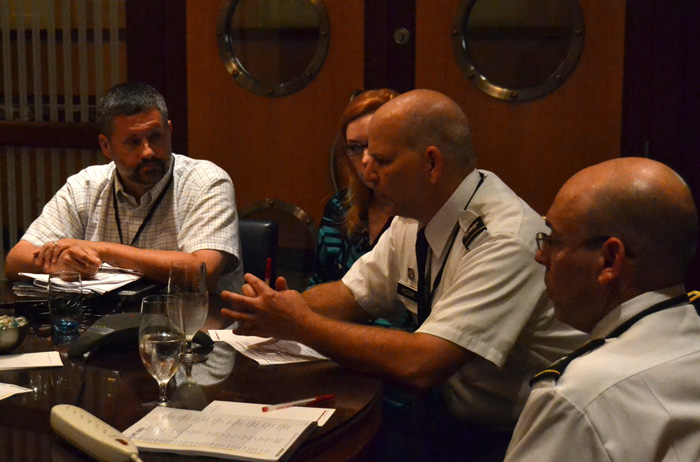Military researchers fight the 'invisible enemy' of infectious diseases

No one likes to talk about diarrhea, but it became a part of the conversation at the 2014 Military Health System Research Symposium in Fort Lauderdale, Florida, Aug. 20. Infectious diseases experts discussed diseases, including gastrointestinal and other infections that service members face as they deploy around the world.
"The fact is, there is no bathroom in a tank," said Col. Michael Kozar, director of Military Infectious Disease Research Program, U.S. Army Medical Research and Materiel Command.
Historically, infectious diseases are responsible for more U.S. casualties than enemy fire. Military service members often deploy to areas endemic with mosquito- and sand fly-transmitted diseases such as malaria or dengue fever, and lethal viruses, such as hantavirus, as well as diarrhea caused by pathogenic bacteria.
"The military is an especially vulnerable population because it is dynamic and mobile," said Col. Emil Lesho, Walter Reed Army Institute of Research researcher.
Despite ongoing prevention, vaccine and therapeutic drug development programs, no licensed vaccines are available for many of these diseases, and methods of protective prophylaxis or treatment are limited or, in some cases, nonexistent.
"Big Pharma is not incentivized to develop new antibiotics," said Lesho. "A good antibiotic eliminates its own necessity."
To ensure military readiness and resiliency, the Department of Defense is leveraging partnerships with organizations such as the National Institutes of Health, the pharmaceutical industry, and philanthropic organizations such as the Bill and Melinda Gates Foundation to amplify the impact of a comparatively small core military investment.
"What we are trying to do is take the risk out of early research for pharmaceutical companies," explained Kozar.
Early clinical trials are testing the effectiveness of vaccines targeting hemorrhagic lethal viruses such as hantavirus, and bacterial diarrhea caused by shigella, enterotoxigenic Escherichia coli and campylobacter. Leadership expects to license two new malarial treatment drugs by 2018. Additionally, two malaria vaccine candidates are currently in advanced development.
In parallel, experts are working on improved vector surveillance and preventive measures, such as an insecticide-impregnated bed net designed to protect sleeping service members from the bites of disease-carrying mosquitoes.
"We aren't doing this research for the previous war; we are trying to get ahead of the next conflict," said Kozar.
Yet, as Kozar pointed out, some wounded warriors from the conflicts in Iraq and Afghanistan are also fighting another infectious disease issue -- wound infections from bacteria or fungus that gets into injury or surgical site and infect the soft tissue or bone. About one-third of wounded warriors will develop a wound infection, according to Dr. David Tribble, Infectious Disease Clinical Research Program, Uniformed Services University of the Health Sciences.
"We are bathed with bacteria. From the moment you are born, you start being colonized with bacteria," said Kozar. "But just because someone is carrying bacteria, doesn't mean it is bad -- it's when it starts an infection."
Researchers added that the work they do will not only ensure military readiness and resiliency, but also translates to public health.
"Staph infections and [Methicillin Resistant Staphylococcus Aureus] are frequent, even in the civilian setting," said Lt. Col. Michael Ellis, Uniformed Services University of the Health Sciences researcher. "Coming up with novel treatments are the best way to go."














